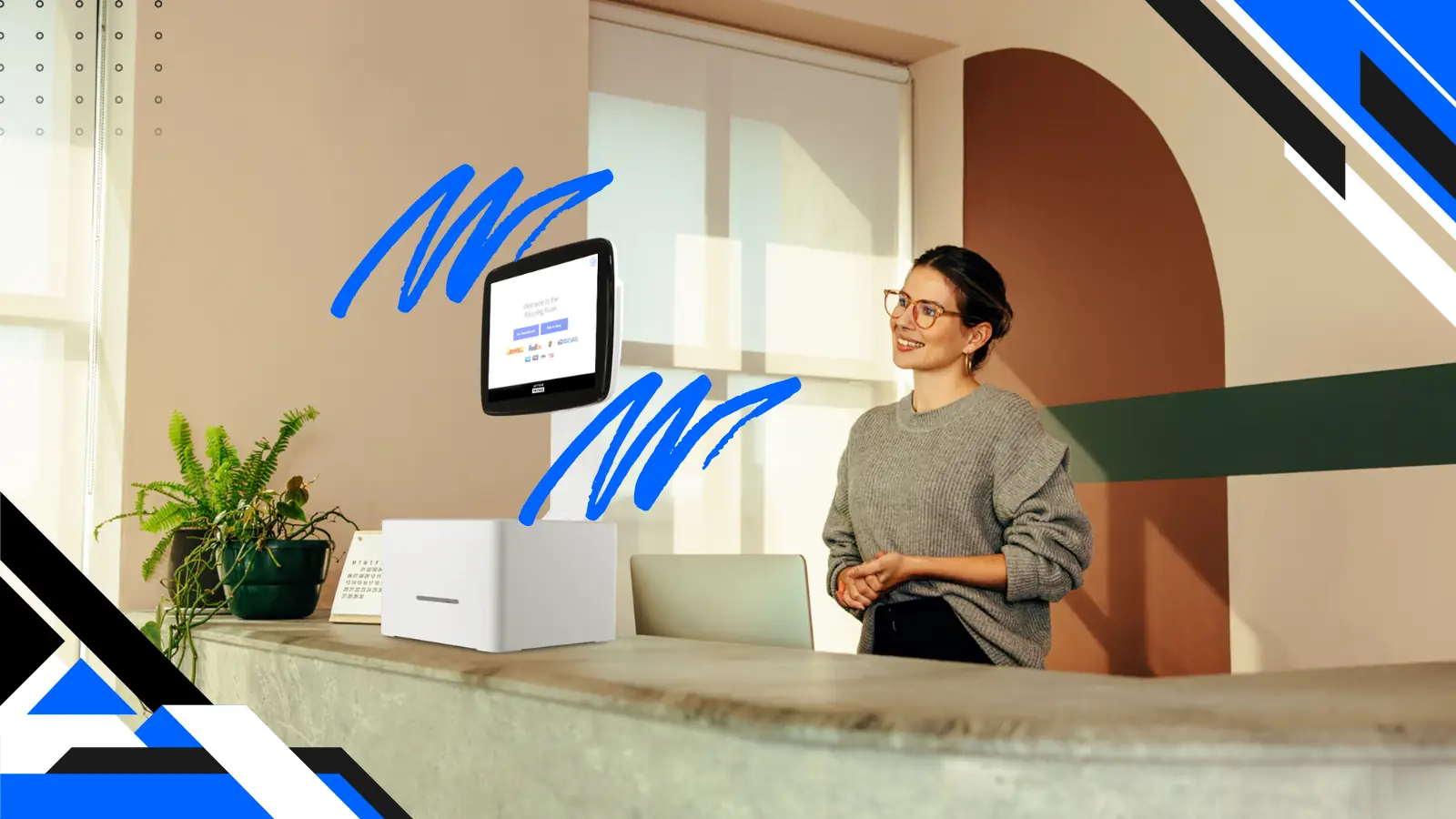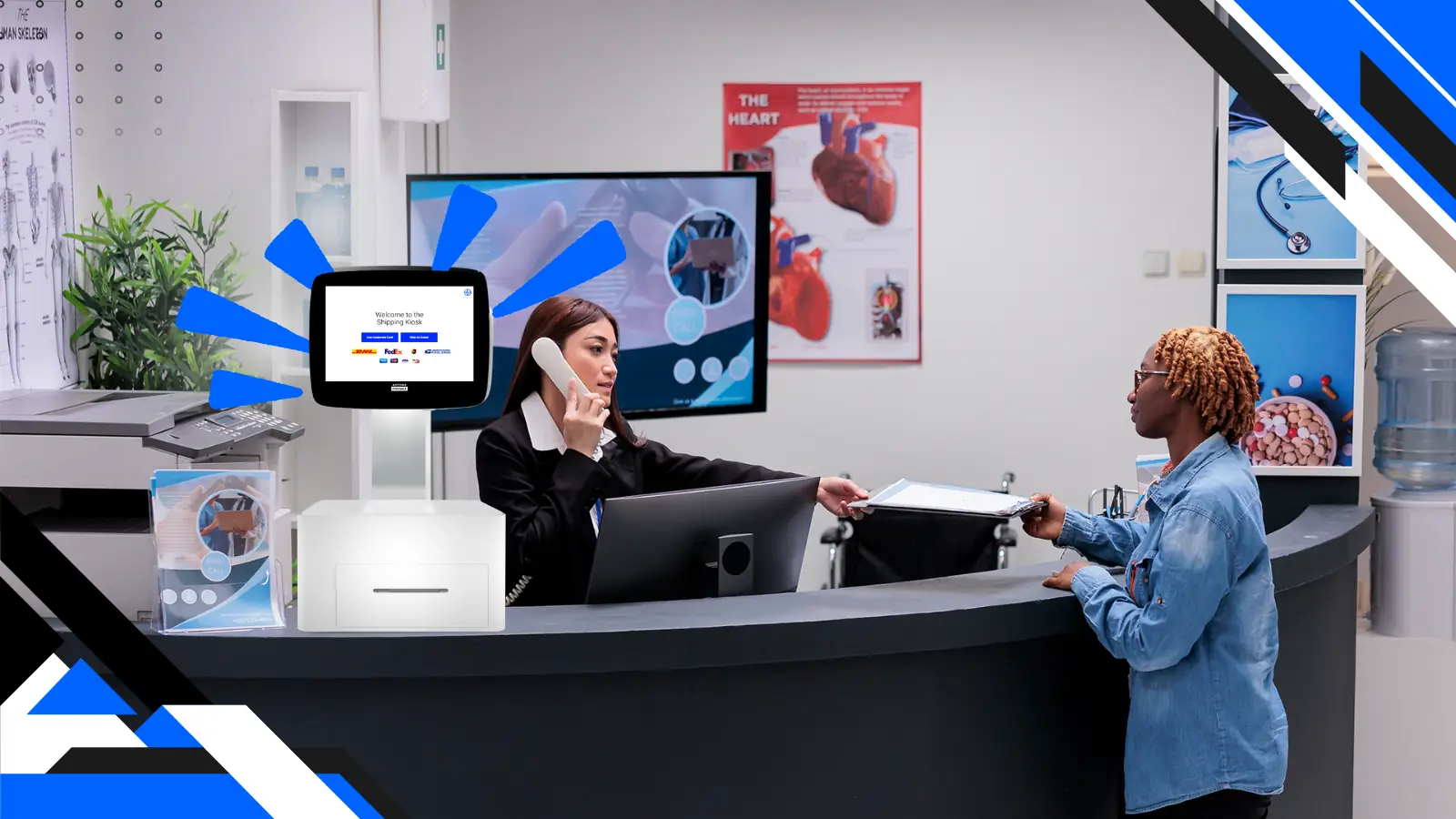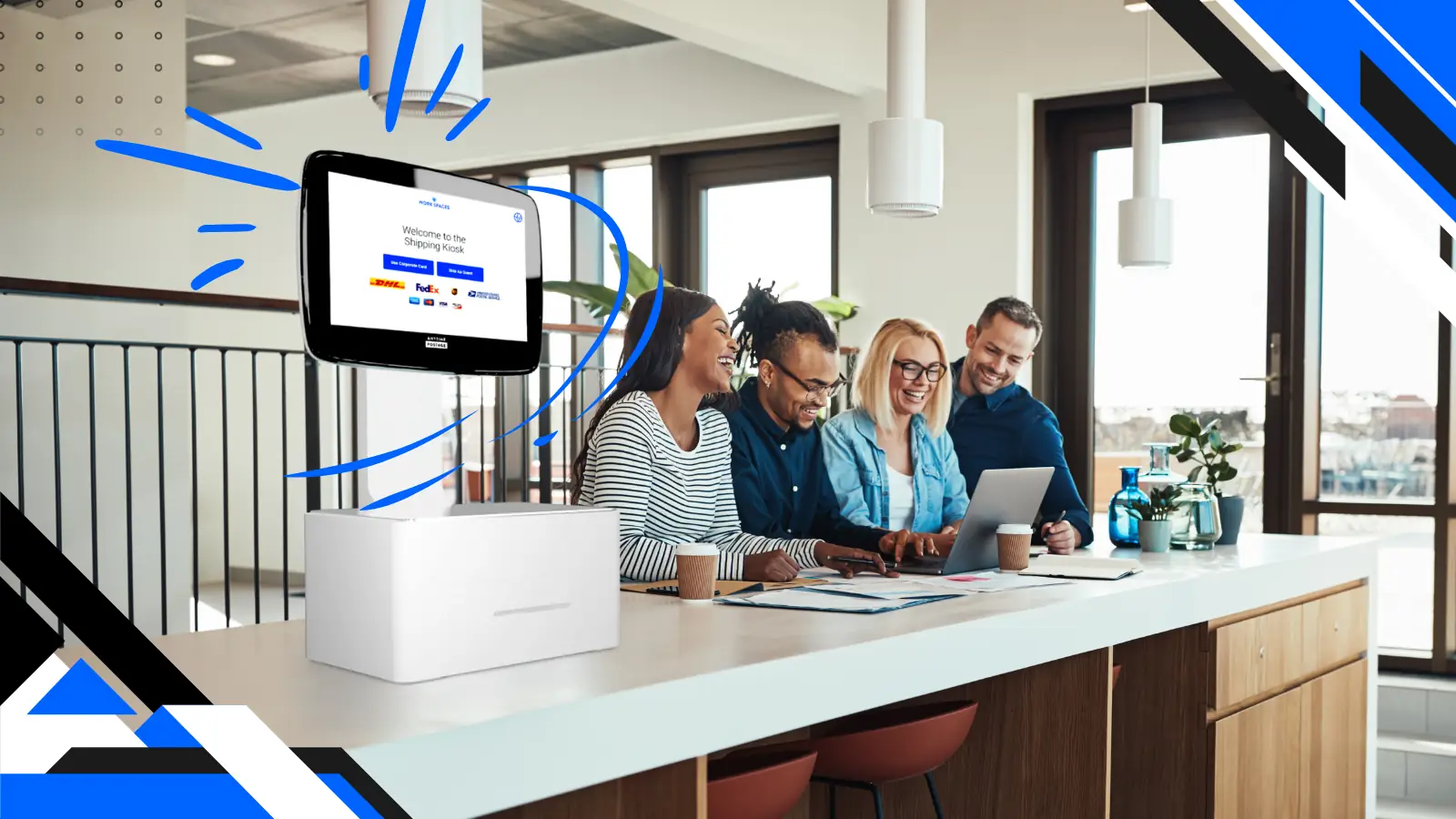August 22, 2025
·
4 min read

Shipping kiosks aren’t a flashy new idea. They’re a practical fix to a common business challenge: Handling shipments without slowing everything else down.
You’ve probably seen a self-service shipping kiosk in action. A touchscreen, a scale, maybe a printer, and a customer quietly getting their box labeled and sent off without help from staff. But behind that smooth process is a simple question: How does that kiosk connect with the rest of your business?
If you already have a point-of-sale system, inventory software, or member database, a shipping kiosk should work with it, not around it. That’s where integration comes in.
Why an Integrated Shipping Kiosk Makes a Difference
Adding a shipping kiosk to your space without integration is like installing a vending machine and asking customers to bring their own change. It works, but it’s clunky.
When the kiosk connects with your systems, shipping becomes part of your workflow. Not a separate task, not another headache. Just part of how things get done.
Here’s what changes:
1. You Remove the Repetitive Work
When order and customer info flows directly from your POS or CRM into the kiosk, you avoid retyping addresses or weight estimates. That means fewer errors and faster checkouts.
2. You Save Time
Shipping shouldn’t require staff to stop what they’re doing. A kiosk handles the whole process, from label creation to payment. Your team stays focused, customers stay moving.
3. You Keep Things Consistent
No missing tracking numbers, no confusion about carrier rules. With the right integration, the data stays clean across all systems.
What a Kiosk Needs to Connect Properly
Not all kiosks are ready to work with your systems right out of the box. The right hardware and software make a big difference, and here’s what matters:
- Carrier Connections: USPS, FedEx, UPS, DHL. The kiosk should support multiple carriers and let users pick their preference.
- Certified Scale and Label Printer: Accurate weight and size readings are a must. The label printer should produce standard 4x6 thermal labels.
- Reliable Internet Access: Ethernet, Wi-Fi, or even cellular backup keeps everything running.
- Flexible Payments: Credit cards, mobile pay, QR codes. The more options, the better.
- Remote Access and Monitoring: You should be able to update prices, carriers, and settings 24/7 without being onsite.
Anytime Postage, for example, includes all of this. It’s built to work in real business environments, not just in test labs. You can connect it to your carrier accounts, track usage, and manage everything remotely.
Connecting with Your Systems

POS Integration
Say someone buys a product in your store, then wants to ship it. If your POS and the kiosk talk to each other, that shipping label can print right there. No extra typing, no switching between systems.
Inventory and ERP
Once a shipment is sent, that info should update in real time. Items marked as fulfilled. Inventory adjusted. That only happens if the kiosk connects to your software through an API or other data link.
Membership or Campus Systems
In places such as coworking spaces, gyms, or college campuses, for example, users can log in using a QR code or ID. That link makes it easy to track shipments per user and automate billing or access.
Accounting and Billing
Tracking what was shipped, which carrier was used, and how much it cost shouldn’t be a puzzle. Integrated kiosks feed this vital data into your financial systems automatically, and Anytime Postage offers monthly billing that breaks down kiosk activity and label charges.
Getting Set Up the Smart Way
Here’s what helps the rollout go smoother:
- Test Internally First: Try it in your back office, mailroom, or staff area. Get comfortable with the setup before opening it up to the public.
- Customize the Branding: Some kiosks let you label the interface with your logo and colors. It makes the kiosk an organic part of your space and helps merchandise your brand and other offerings.
- Automate Where Possible: Let the kiosk handle weight and pricing based on rules you set and adjust anytime at your discretion.
- Train Lightly: A short walkthrough is often all it takes. Good self-service kiosks clearly walk the user through each step on screen.
Where It Works Best

Retail and Print Shops
Shipping adds another layer of convenience for customers. If they’re already picking up prints or products, shipping them on the spot is easy.
Coworking Spaces
Members appreciate having a self-service option. It reduces support requests and gives people control over their own shipments.
Hotels
Guests can ship personal items, returns, or packages without needing help from the front desk.
Schools and Campuses
Students and staff can ship items anytime. Many use their campus ID to access the kiosk. It takes pressure off the central mailroom and gives everyone more flexibility.
What to Track
Once it’s up and running, here’s what you’ll want to watch:
- Shipments per day or per week.
- Carrier usage and delivery times.
- Revenue from shipping markups.
- Cost savings on staff time.
- Customer or user feedback.
Many businesses hit break even on a kiosk well within the first year. After that, it keeps generating value with minimal maintenance.
Final Takeaway
Shipping doesn’t need to slow things down. When a kiosk connects with your business systems, it seamlessly fits into how you already work. It simplifies shipping for customers, reduces staff workload, and keeps your data in sync.
If you’re looking for a shipping kiosk that fits into your current setup without a hassle, Anytime Postage offers plug-and-play systems with real-time management, carrier flexibility, and easy integration.
Want to see how it would work for your space? Request a demo and find out the significant benefits that a self-service shipping kiosk provides.


